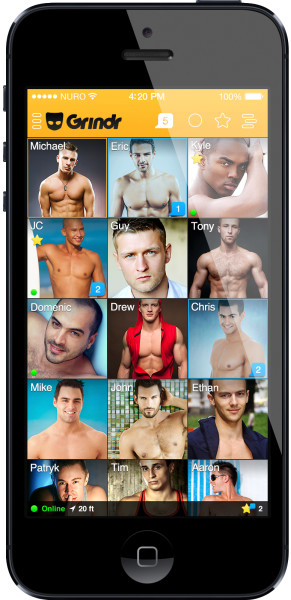“Pure,” “Grindr” and “Tinder” are apps that allow a person to “hook up” or meet up.
“Pure,” for example is an app that uses GPS technology to locate anyone in the area who has a profile.
Your request to meet up will be posted among the friends you “match” with. Then you begin to get requests to meet up. If you accept other “matches,” you will be notified that you have found company for the night. Or you may “decline and end dialog” and keep searching.
“Most guys I know just go on there to hook up,” said Gabriel, senior music major, who requested his last name not be used in this article.
Gabriel has used the app called “Grindr,” which caters to males looking for males. The app launched in 2009 and now has more than seven million users in 192 countries.
“It feels like a game in all honesty,” Gabriel said. “It’s kind of weird.”
He said although he has met some cool people, the relationships don’t feel substantial because of the motives.
Senior Ricardo Reyes, who’s used “Tinder,” said he likes the way the profiles are set up.
“I believe it’s a good site to meet new people.” Reyes said.
“Tinder” is an app that was created by USC grads Sean Rad and Justin Mateen. “Tinder” works synonymously with Facebook.
This app allows you to create a profile with pictures and not much else. You can “miss” or “hit” a match, with an “X” for “dislike” and a “heart” for “like.” Once you “heart” a match, the app takes you into a private chat room and you are free to interact with the other person.
Michael Duran, junior art major, has seen these apps advertised on Facebook and Hulu. But when it comes down to it, he said he would never use them.
“You could end up with anybody,” Duran said, a thought that has kept his curiosity from wandering.
Dr. Ogechika Alozie, a medical doctor at Texas Tech, works with diagnosing HIV and sexually transmitted diseases. He said he has had a lot of patients who have admitted to using the apps.
“One of the ways that they do hook up is in the HIV community or using apps like this,” Alozie said.
However, Alozie is not convinced about existing data that connects using such apps and contracting an STD.
“In communities that use a lot of online dating, there seems to be some cycling of HIV,” Alozie said. “So you have these clusters that get infected and then spread it to clusters.”
David Peralta-Torres is an HIV education and prevention specialist at the El Paso Department of Health and is an expert on such apps. “There is free version and a pay version,” Torres said of “Grindr.”
“Jack’d” and “Scruff” are also apps like “Grindr” that cater to men seeking men. Torres is more familiar with these apps and “Tinder.” He recommends everyone get tested every 3-6 months.
“Hula” is an iPhone app that and website on the other end of the spectrum. This app allows you to request your recent STD testing results from anywhere in the country. Hula then takes your results and displays them digital on your profile with a simple positive or negative.
Here is more of what Gabriel had to say:
Helen Yip may be reached at [email protected].






